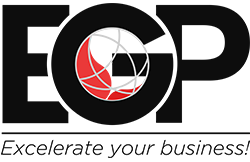In FSN’s Agility in Planning, Budgeting, and Forecasting Global Survey 2021, scenario planning was a major focus. The survey drew responses from 509 international senior finance professionals on LinkedIn’s FSN Modern Finance Forum, and it encompassed finance experts from 23 different sectors. Organizations may ‘lookout further’ using scenario planning, avoiding the risk and uncertainty of not knowing or planning for what might happen when a significant change event occurs.
Agility is a significant asset for any company. However, the study reveals that making accurate, long-term projections and reacting fast to both internal and external changes aren’t abilities that are uniformly displayed in all businesses. In reality, according to the Agility in Planning, Budgeting, and Forecasting Survey, some businesses lack the core capabilities required to sustain agile planning, budgeting, and forecasting process. Importantly, the study revealed that scenario planners are twice as likely as non-scenario planners to be able to confidently anticipate a year ahead — that is, 31% of scenario planners vs. 11% of non-scenario planners who have yet to begin financial reform.
What Is Scenario Planning?
Finance teams should almost always use scenario planning as a “go-to” option when dealing with uncertainty. The following are the main reasons.
- Scenario planning allows finance teams to swiftly construct numerous “what-if” scenarios without having to complete a comprehensive bottom-up projection. Unlike a complete prediction, scenario planning does not need involvement from all stakeholders throughout the business.
- Effective scenario planning focuses on business drivers that transcend the organization or major business divisions. Focusing on “big-ticket” business factors that impact revenue and expenses, such as product quantities or pricing, is the best strategy. Housing starts and/or permit activity, for example, are business drivers that typically imply demand if your company is involved in building.
- Using “Flexes” in Financial Statements: Effective scenario analyses “flex” each scenario to dynamically calculate the related impact across the P&L, balance sheet, and cash flow statements. While scenario plans focus on changes to key business drivers, effective scenario analyses “flex” each scenario to dynamically calculate the related impact across the P&L, balance sheet, and cash flow statements. This method allows Finance management to see the impact on COGS, gross margin percent, EBITDA, EPS, and cash flow – all of which are important KPIs when dealing with uncertainty.
- Realistic Scenarios “surround” the Numbers: Creating too many possibilities doesn’t help you make good decisions. Scenario planning avoids scenario overload by focusing on just actual situations, allowing you to design a small number of scenarios to monitor and align with critical choices.
Organizational Adoption is Low
According to the FSN report, just 4% of companies devote enough effort to effective scenario preparation. Furthermore, despite the rise in interest in scenario planning after the COVID-19 epidemic ripped away assumptions and predictions with unprecedented speed and ferocity, this low adoption rate has remained.
Why are companies so amenable to scenario planning? According to the FSN study, one of the main reasons is a (perceived) lack of automation. Scenario planning is time-consuming and essentially useless without automation unless an organization can model numerous scenarios, assumptions, and variables at the same time – which is at best a tedious task and at worst impossible within the constraints of a spreadsheet.
The COVID-19 Pandemic’s Effects
COVID-19, according to the study, increased the emphasis on scenario planning since businesses had to adapt rapidly to change and plan for the unknowns that lay ahead. Unfortunately, some organizations were completely unprepared for what was about to unfold. As constraints grew, company models evolved, and many conventional income streams dried up, finance teams were frequently asked to forecast alternative outcomes multiple times a day. Many businesses were simply unable to satisfy the expectations of analysis. Even if they were able to fulfill the needs, the route to get there was frequently strewn with inefficient manual procedures and the possibility of many mistakes. These factors may have contributed to some bad decision-making in the past. However, such concerns have prompted organizations to lay the groundwork for future events of a similar sort.
The pandemic is still a challenge in many nations today, but possibilities will continue to emerge within those contexts. “Organizations will not be able to take advantage of them [opportunities] unless they have a clear vision of their future, and for that, they require great agility in planning, budgeting, and forecasting,” according to the study.
They need the right tools
Due to the difficulty of maintaining and executing numerous scenarios, companies that rely on spreadsheets will be severely constrained in their capabilities. The benefits of scenario planning can only be fully realized by companies that have mastered their data and implemented specialized technologies. According to the poll, 33% of non-scenario planners claim they are “data overloaded,” meaning they are swamped with unconnected spreadsheets (data governance is also weak), whereas just 8% of scenario planners say they are “data overburdened.”
Comprehensive & Extensive Benefits
According to the FSN poll, 77 percent of companies can forecast earnings within a week if they take the time to examine different scenarios. In comparison, 41% of finance executives believe they don’t have enough time to plan scenarios. Scenario planning also improves predicting accuracy. Fifty-four percent of scenario planners can predict earnings and revenue to within +/- 5%. Only 36% and 41% of non-scenario planners, respectively, can estimate earnings and sales with such precision.
Scenario planning, ultimately, establishes the ability to adjust in the face of tremendous change. According to the poll, scenario planners can adjust for a modest change, such as adding or removing a new cost line from a budget or projection model, in half a day, compared to just 58 percent of their less prepared counterparts.
Two additional significant benefits of scenario preparation enhance this agility:
- Data Mastery: A scenario planner’s connection with data and how it’s managed says a lot about the organization’s benefits. Analytic agility is the result of data mastery.
- Scenario planners are more likely to engage with stakeholders both inside and outside the company, which leads to more efficient and effective procedures and resource usage.
Scenario planning ensures agility in the present and future.
The recent pandemic demonstrated that businesses must move quickly, understand their alternatives, and keep cash on hand to survive. For the first time, several businesses may have learned information about themselves and how they operate. Many short-term models now in use by businesses are ill-suited to handle the long-term strategic cash management presently necessary, allowing for such realizations. Many of the models are just too short-term and specific, focusing on a particular client, area, or transaction.
Effective scenario planning generates situations that are radically different, allowing for the most debate about possible actions. The actions to take should be obvious when scenarios are performed, thus models must identify particular outcomes to make this feasible. The use of Monte Carlo simulations, which generate hundreds of possibilities, gives the outcomes a degree of probability and helps develop confidence in future decisions.



